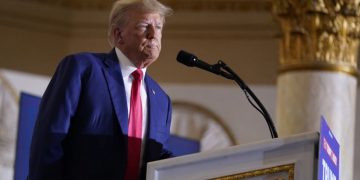Indo-Asian News Service, United Nations, Jan 14: Helped along by falling oil prices and by lower interest rates in developed countries, India’s economy is expected to grow by seven percent next year and these two factors can be a game-changer if the nation were to seize the opportunity to implement fiscal and structural reforms, World Bank Chief Economist Kaushik Basu said Tuesday.
As for this year, Indian economy is expected to grow by 6.4, according to two separate projections released here Tuesday by the Bangkok-based UN Economic and Social Commission for Asia and the Pacific (ESCAP) and the Washington-based World Bank, which also predicted a 7 percent increase in 2017.
Overall, Basu painted a dim picture of the global economy facing a “stalled recovery in some high-income economies and even some middle-income countries” but said “there are some silver linings behind the clouds.”
“The lower oil price, which is expected to persist through 2015,” he said, “is lowering inflation worldwide and is likely to delay interest rate hikes in rich countries. This creates a window of opportunity for oil-importing countries, such as China and India; we expect India’s growth to rise to 7 percent by 2016.”
“What is critical is for nations to use this window to usher in fiscal and structural reforms, which can boost long-run growth and inclusive development,” he added.
Both ESCAP and the World Bank saw the low oil prices bonanza helping cut fuel subsidies in order to divert funds for financing sustainable development while also reforming the economy.
“This is a particularly critical and opportune time to decrease subsidies,” ESCAP Executive Secretary Shamshad Akhtar said. “Reducing subsidies can raise significant public financial resources for productive investment in the region and could make needed funds available for financing sustainable development.”
World Bank’s Director of Development Prospects, Ayhan Kose, said, “For both exporters and importers, low oil prices present an opportunity to undertake reforms that can increase fiscal resources and help broader environmental objectives.”
According to the World Bank’s Global Economic Prospects (GEP) report, the global economy is projected to grow by 3 percent this year, 3.3 percent in 2016 and 3.2 percent in 2017. Last year, it grew by only a dismal 2.6 percent.
ESCAP’s report, Year-end Update of the Economic and Social Survey of Asia and the Pacific 2014, forecast a 5.8 percent growth for the region’s economy as a whole, up from last year’s 5.6 percent.
The ESCAP report mentioned the “Make in India” campaign as a step to promote structural change that favours manufacturing by making it easier to establish and operate a business in India.
The report also took note of the initiatives in India to open bank accounts for 75 million poor households by next month and to boost youth employment by opening more community colleges and vocational courses, and promoting entrepreneurship.
Although India has identified infrastructure development as a key element for its growth plans, ESCAP said, it faces a shortage of government resources. Therefore, ESCAP recommended giving the private sector an important role in developing infrastructure in collaboration with governments.
The World Bank report said that reforms and deregulation in India should boost foreign direct investment. It noted that increases in investments, which account for about 30 percent of the gross domestic product (GDP), should help raise the nation’s growth rate to 7 percent by 2016. But the World Bank warned, “Any slackening in the reform momentum could result in a more modest or slower pace of recovery.”






































